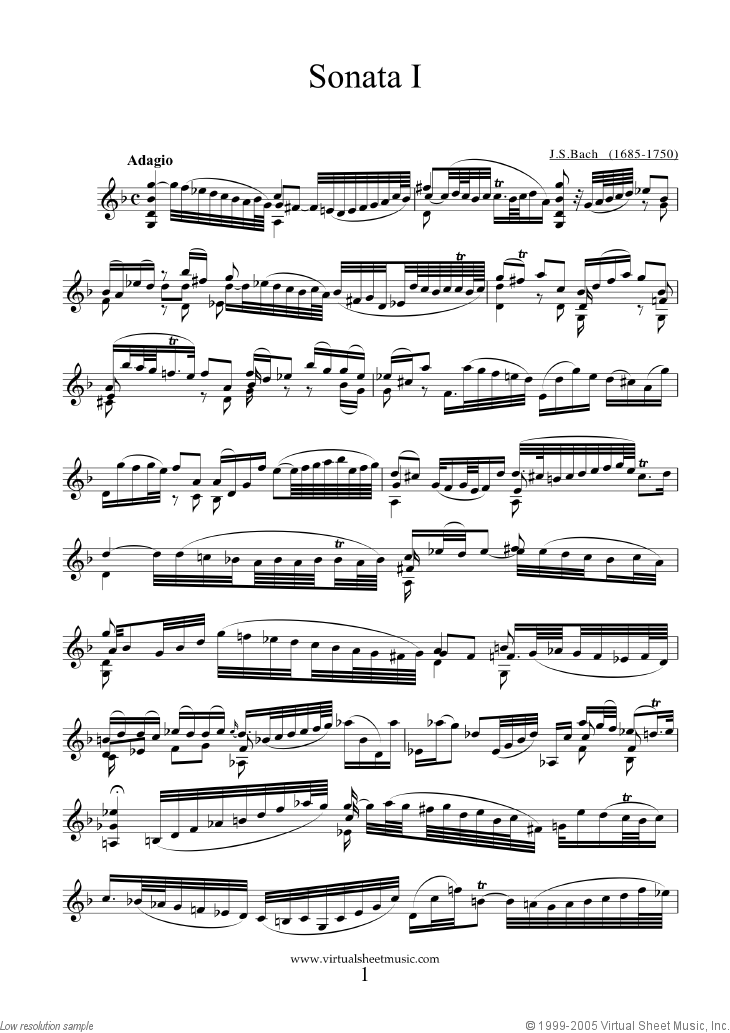Bach Bwv 1001 Presto Guitar Pdf Download


Which method of viewing music should I use? Score Exchange has two methods to display previews of music: seView which uses regular html and javascipt and the Scorch plug-in from Avid which needs to be downloaded and installed onto your computer. Both have advantages and disadvantages: seView seView, is the most compatible option. You should be able to view music on all modern web browsers including most mobile devices. Even if your device does not support javascript you should still be able to preview at least page one of the music. You do not need to install any additional software to use seView.
Scorch Scorch is a free plug-in from Avid for displaying and printing music. It can also play the music that you're seeing.
As modern web browsers are updated, Scorch is no longer compatible with many browsers. Scorch has never been compatible with mobile devices and some web browsers on Mac computers. If your web browser does not install Scorch automatically, you can.
Print and download Bach - Sonata No. 1 in G minor - BWV 1001 - Presto for. Made by Nicolas. ClassClef is a non profit blog directory dedicated to all classical guitarists seeking free sheet music, tablature, gpx and midi. Pieces range from easy to hard. This page contain Norman Lebrecht's CDs of the Week from February 19, 2007 to March 4, 2014. For the latest Lebrecht Weekly, visit here. Presto BWV 1001 complete draft 3-21-01. [MIDI FILE] [Acrobat PDF file], [TABLEDIT FILE], 4. Allegro BWV 1003 Posted May 2002. From Sonata No.2 for solo violin. Netscape users: To download TEFs in Netscape, they need to be zipped, so here's a zip file containing most of the above *.tef files (not including the 'drafts'):.
Performed by Daniel Veesey. Problems playing these files? Sonata (;:, pl. Sonate; from Latin and Italian: sonare, 'to sound'), in, literally means a piece played as opposed to a (Latin and Italian cantare, 'to sing'), a piece sung. The term evolved through the, designating a variety of forms until the era, when it took on increasing importance, and is vague.
By the early 19th century, it came to represent a principle of composing large-scale works. It was applied to most instrumental genres and regarded—alongside the —as one of two fundamental methods of organizing, interpreting and analyzing concert music.
Though the musical style of sonatas has changed since the Classical era, most 20th- and 21st-century sonatas still maintain the same structure. The term, pl. Sonatine, the form of sonata, is often used for a short or technically easy sonata. Mediashopping Zumba Fitness Download. Contents • • • • • • • • • • • • • • • • Instrumentation [ ] In the, a sonata was for one or more instruments almost always with.
After the Baroque period most works designated as sonatas specifically are performed by a solo instrument, most often a keyboard instrument, or by a solo instrument accompanied by a keyboard instrument. Sonatas for a solo instrument other than keyboard have been composed, as have sonatas for other combinations of instruments.
History of usage [ ] Baroque [ ] In the works of and his contemporaries, two broad classes of sonata were established, and were first described by in his Dictionaire de musique (third edition, Amsterdam, ca. 1710): the (that is, suitable for use in church), which was the type 'rightly known as Sonatas', and the (proper for use at court), which consists of a prelude followed by a succession of dances, all in the same key. Although the four, five, or six movements of the sonata da chiesa are also most often in one key, one or two of the internal movements are sometimes in a contrasting tonality (, 23–24).
The sonata da chiesa, generally for one or more and, consisted normally of a slow introduction, a loosely fugued, a slow movement, and a lively finale in some suggesting affinity with the dance-tunes of the. This scheme, however, was not very clearly defined, until the works of when it became the essential sonata and persisted as a tradition of Italian violin music. The sonata da camera consisted almost entirely of idealized dance-tunes. On the other hand, the features of sonata da chiesa and sonata da camera then tended to be freely intermixed. Although nearly half of Bach's 1,100 surviving compositions, arrangements, and transcriptions are instrumental works, only about 4% are sonatas (, 266). The term sonata is also applied to the series of for solo, or sometimes for other keyboard instruments, by, originally published under the name Essercizi per il gravicembalo (Exercises for the Harpsichord). Most of these pieces are in one binary-form movement only, with two parts that are in the same tempo and use the same thematic material, though occasionally there will be changes in tempo within the sections.
They are frequently virtuosic, and use more distant harmonic transitions and modulations than were common for other works of the time. They were admired for their great variety and invention. Both the solo and trio sonatas of show parallels with the concerti he was writing at the same time. He composed over 70 sonatas, the great majority of which are of the solo type; most of the rest are trio sonatas, and a very small number are of the multivoice type (, 169–70).